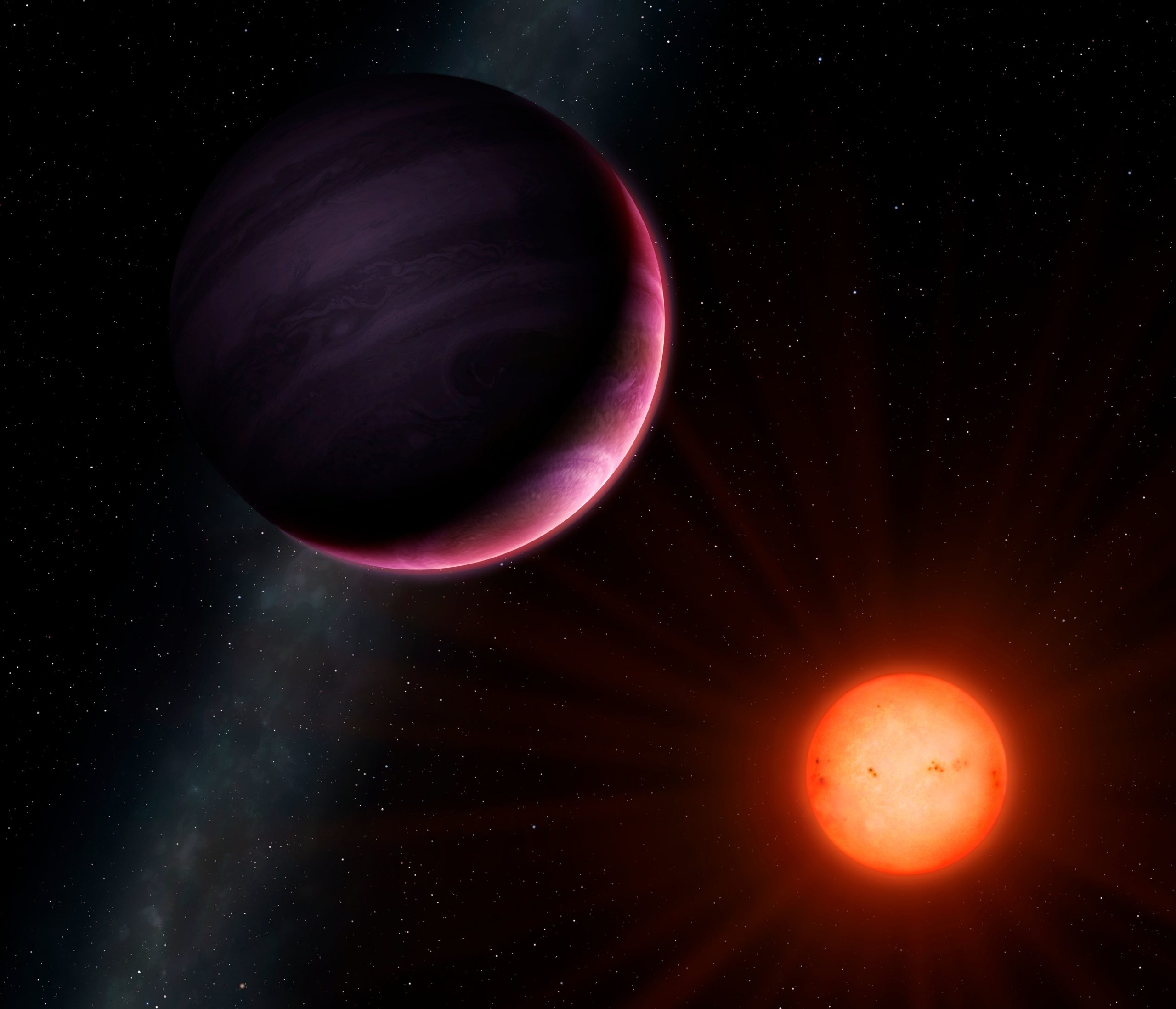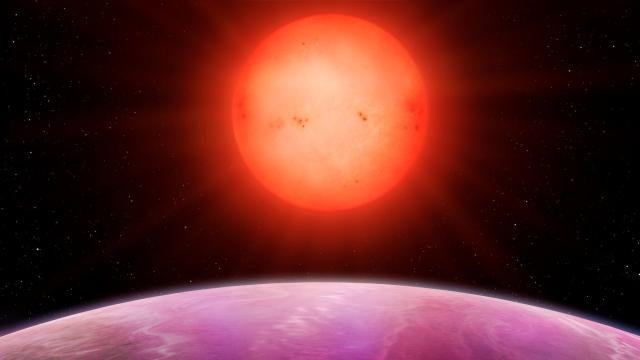Using an innovative new telescope array, an international team of researchers has discovered a distant gas giant roughly the size of Jupiter around a star half the size of ours. It’s considered the largest planet in proportion to its companion star.
Artist’s impression of sunrise on planet NGTS-1b (Image: University of Warwick/Mark Garlick)
New research published in Monthly Notices of the Royal Astronomical Society challenges prevailing theories about planet formation and how big planets can get in systems containing small stars, such as red dwarfs. The discovery of NGTS-1b by Daniel Bayliss and Peter Wheatley from the University of Warwick’s Astronomy and Astrophysics Group represents only the third gas giant found to transit an M-dwarf star, and the largest planet in comparison to its host star. The previous biggest planets in proportion to their companion stars were Kepler-45b and HATS-6b, but this new planet is considerably larger and heavier.
Bayliss and Wheatley spotted the hot Jupiter using the Next-Generation Transit Survey (NGTS) instrument, a wide-field observing facility composed of several telescopes at the European Southern Observatory’s Paranal Observatory in Northern Chile. This state-of-the-art facility is operated by the Universities of Warwick, Leicester, Cambridge, Queen’s University Belfast, Observatoire de Genève, DLR Berlin and Universidad de Chile.

Artist’s impression of NGTS-1b with its neighbouring star (Image: University of Warwick/Mark Garlick).
“The discovery of NGTS-1b was a complete surprise to us – such massive planets were not thought to exist around such small stars,” said Bayliss in a statement. “This is the first exoplanet we have found with our new NGTS facility and we are already challenging the received wisdom of how planets form. Our challenge is to now find out how common these types of planets are in the Galaxy.”
To make the discovery, the astronomers monitored patches of night sky over several months, detecting red light from a star using special red-sensitive cameras. This M-dwarf star, NGTS-1, experiences brief and periodic dips in brightness every 2.6 days, suggesting the presence of an orbiting planet. The degree of dimming, plus measurements of the star’s “wobble” confirmed both the presence and size of the large gas giant.
Located 600 light years away, gas giant NGTS-1b has about 20 per cent less mass than Jupiter, but its companion star features a radius and mass half that of our Sun. The exoplanet – a so-called hot Jupiter – is located just 4.5 million km from its host, which is a mere three per cent the distance Earth is from the Sun. A year on this planet lasts just 2.5 Earth days, and the temperature is a whopping 530C, or 800 kelvin.
Prior to this discovery astronomers didn’t think that a star of this diminutive size could produce a planet so large. Scientists figured that small stars are able to churn out rocky planets, but that dwarf star systems didn’t possess enough overall material to form Jupiter-sized planets. This latest discovery means pre-existing theories are flawed, and that more science needs to be done.
“NGTS-1b was difficult to find, despite being a monster of a planet, because its parent star is small and faint. Small stars are actually the most common in the universe, so it is possible that there are many of these giant planets waiting to [be] found,” said Wheatley. “Having worked for almost a decade to develop the NGTS telescope array, it is thrilling to see it picking out new and unexpected types of planets. I’m looking forward to seeing what other kinds of exciting new planets we can turn up.”
In terms of a theory, the researchers speculate that NGTS-1, during its formative stages, featured an unusually thick protoplanetary disk. How and why this should be the case remains a mystery. Moving forward, it would be a good idea for researchers to create computer models showing how planets might form in such systems, while continuing the search for similar systems.
